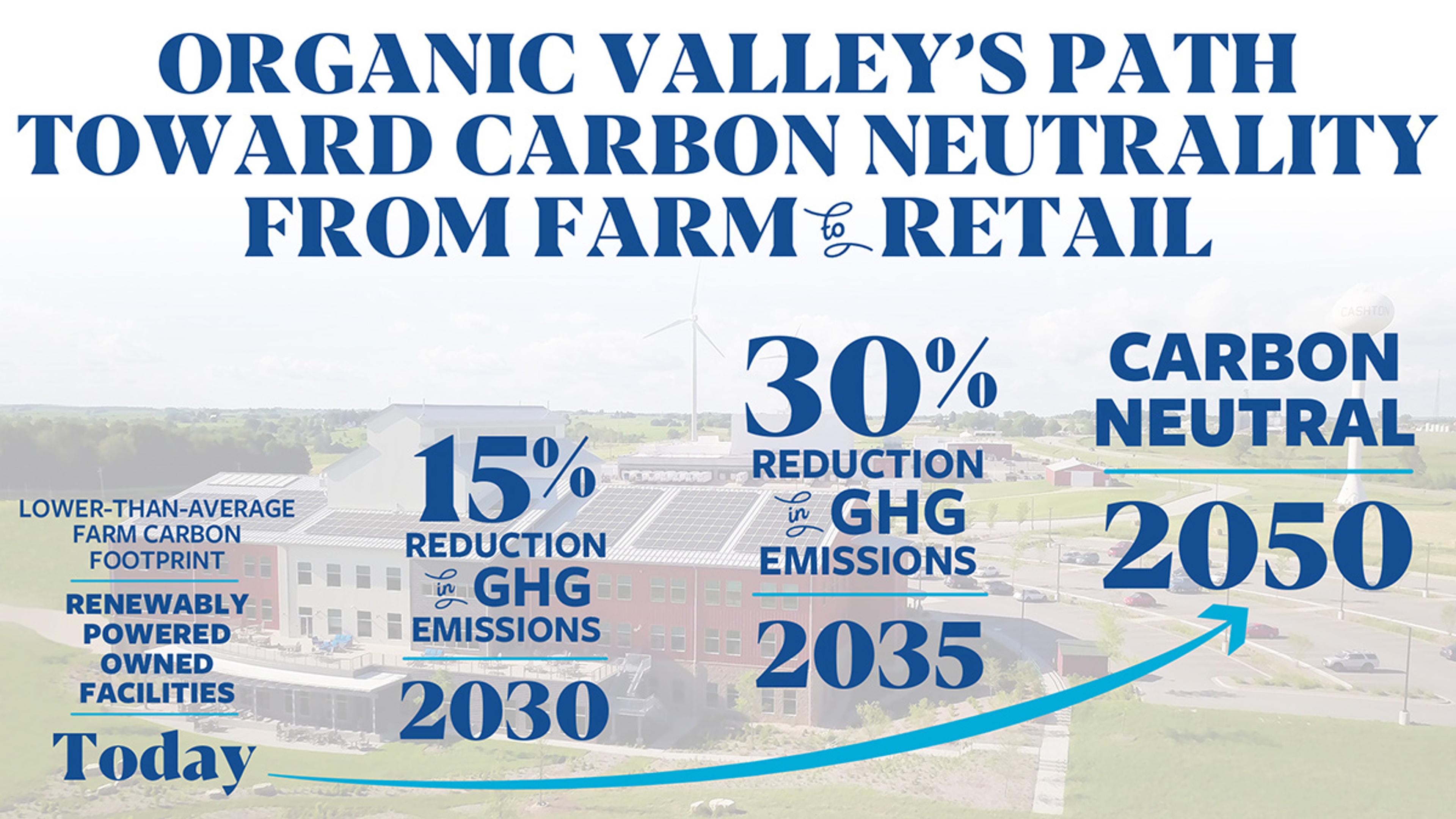
Earth
Small Carbon Footprint, Big Climate Goals: Organic Valley Carbon Neutral by 2050
Organic Valley will be carbon neutral by 2050. Just like with animal care, we keep moving toward a better food system. Now, Organic Valley is committing to becoming carbon neutral by 2050. And as it turns out, our nearly 1,800 family farms already have a low carbon footprint compared to the rest of dairy in the U.S.
In fact, we just finished phase one of our dairy life cycle assessment (LCA) evaluating on-farm greenhouse gas emissions from our organic dairy farms across a diverse range of climates and management practices. The results are in: Organic Valley’s farming practices have a measurable benefit for the planet.

An Organic Valley farm in Wisconsin.
Climate-Friendly Dairy
LCA results showed that Organic Valley’s dairy farm emissions are lower than the U.S. dairy average. This two-year-long assessment, completed by Organic Valley staff and researchers at the University of Wisconsin-Madison, will be completed in early 2022 and submitted for peer-review and publishing.
“This LCA represents the most comprehensive organic dairy environmental impact assessment in the United States completed to date,” said Dr. Rebecca Larson,University of Wisconsin-Madison professor. “The LCA covers a wide range of regions and management practices and includes the development of an innovative accounting method for carbon sequestration by Dr. Aguirre-Villegas.”
Organic Valley’s LCA revealed the power of getting cows grazing on fresh grasses. Carbon sequestration from pasture as well as from forage and crop production reduced net emissions by 15% on average. The analysis was customized for organic pasture-based dairies and the specific farm management practices found on Organic Valley dairies. It factored in farm characteristics such as milk production volume, housing type, cows’ diet, manure management, and—notably—a new methodology to factor in carbon sequestration.
Many practices that help to contain and reduce emissions also offer other benefits to our farmers, such as reducing long-term operating costs like energy bills and feed, increasing soil health and water-holding capacity, reducing runoff, and improving cow comfort and health. We have a history of stepping up to care for people, animals, and the earth, and this new goal to be carbon neutral by 2050 is our next step toward continual improvement.

Solar panels are seen at an Organic Valley farm at dusk.
Organic Valley’s Climate Commitment
As the country’s largest farmer-owned organic cooperative, our journey toward a carbon-neutral supply chain will take time and dedication. A series of milestones aims for 15% progress toward carbon neutrality by 2030, and 30% toward carbon neutral by 2035.
The cooperative and our membership are off to a very strong start. All Organic Valley business facilities are powered with 100% renewable electricity, and the dairy LCA showed that co-op members already maintain a farm carbon footprint lower than the national average. At our business facilities, we are continually exploring energy alternatives, working with coprocessors to reduce their energy use, and reducing emissions from hauling and freight.
Our journey toward carbon neutrality will create a roadmap for the entire supply chain, increasing efficiency and effectiveness over time. Organic Valley farmers and staff will work together on these voluntary initiatives, moving the cooperative toward its 2050 goal.
"200 Organic Valley farmers already have on-farm solar energy powering their operations."
- -

How Will We Reach Our Carbon Neutral Goal?
To reach true carbon neutral dairy, it is going to take years of hard work and a cooperative approach to the future of farming. We are already working on new clean energy projects, including energy efficiency and renewable energy. Organic Valley’s newly launched Powering the Good Loan Fund provides our organic farmers with the best loan terms for energy efficiency and renewable energy installations. To date, 200 Organic Valley farmers already have on-farm solar energy powering their operations, and we look forward to watching that number increase in upcoming years.
One of the easiest and most appealing improvements to improve a farm’s climate resilience is planting trees in the form of windbreaks, hedgerows, riparian plantings (along waterways), and silvopasture (planting in pastures). Many Organic Valley farms, provide shade for cows, and reduce soil erosion.
Adding creative, healthy options into cow’s diets, such as red seaweed and brown seaweed found in kelp meal, garlic, and other options, are just a few dietary supplements that may reduce the gases cows emit.
Finally, ongoing pasture improvements may be one of the best ways farms can reduce their emissions. Organic Valley’s satellite grazing service, a 2021 pilot program slated for expansion in 2022, will assist farmers who want to improve carbon sequestration while maximizing nutrition from pasture. Farmers can also inter-seed legumes and perennials into existing pastures and apply a layer of compost to make pastures even more vigorous. These and other strategies promote increased productivity and diversity of pasture, helping to sequester carbon in the ground instead of the atmosphere.
Organic Valley’s mission is, in part, to protect and improve the future of farming—and there’s no better way to do so than to move continually toward cleaner, more responsible stewardship of the world around us.
Related Articles
- Tags:
- climate,
- environment,
- land stewardship & conservation















